S P E C I A L R E P O R T
I – INESC Porto visited by the External Scientific Committee
UESP maintains position in the market 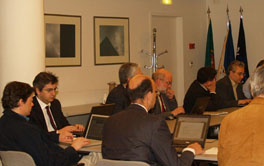
On the 4th and 5th of May, INESC Porto was visited by the External Scientific Committee. Besides giving us excellent indications regarding the future, the visit worked as some kind of rehearsal for the audit the FCT will carry out, later this year. In the next 4 months, the Special section of BIP will be dedicated to the visit of the External Scientific Committee and more precisely to the work each R&D Unit has had preparing the visit. In the first “chapter”, BIP interviewed Luís Carneiro, coordinator of the Manufacturing Systems Engineering Unit.
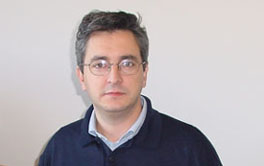 BIP: How did you prepare for the Visit? BIP: How did you prepare for the Visit?
Luís Carneiro: As Murphy’s Law never fails, the arrangements for this visit coincided with a period of hard work associated to the conclusion of some projects and the preparation of new proposals as well as to trips of some key members to other countries. All this made these arrangements a fine example of cooperative work at a distance.
The preparation started with a meeting that gathered as many senior researchers as possible and tuned the strategy for this visit. In the meeting, the programme of the visit of the External Scientific Committee to UESP was established and work was assigned. This work was carried out through information exchanges by e-mail and telephone with the ones who were not in Porto and through personal contacts, when possible.
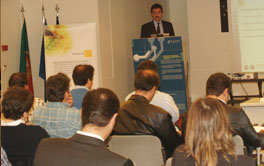 Some posters of the Unit and of projects were prepared, as well as a set of presentations that structured the main subjects in discussion. Some posters of the Unit and of projects were prepared, as well as a set of presentations that structured the main subjects in discussion.
The groundwork included a presentation on the activity and global positioning of the Unit, main results obtained and objectives for the future followed by presentations on the four areas where more relevant scientific work has been done: Entrepreneurial Cooperation Networks, Optimisation of planning and scheduling problems, optimization of cutting and bundling problems, and Internal Logistics. Naturally, the Unit’s research activities were given more emphasis.
BIP: What image of unit(y) did you show the Scientific Committee?
L.C.: The first presentation tried to show the Unit in a general way, focusing on our mission, position in the market, main areas of performance and services paid. 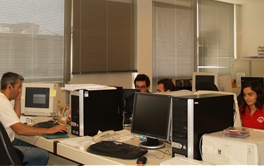
There was also a presentation of the main results obtained, including aspects such as the volume of activity, type of projects, number of publications, number of orientations, human resources, etc.
The objectives and strategy for the next years were also presented, from which the scientific strategy stood out.
The whole presentation was structured around a slide designed for this session. It shows the relation between the main performance areas of the Unit and the research topics that support them.
BIP: What was the presentation? What objectives did you try to accomplish? 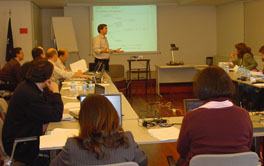
L.C.: After the initial presentation, several others structured the discussion on each one of the four areas where the Unit’s scientific activity is centred.
Each one of these presentations transmitted an integrated view of the work area, including a definition of the area, view, main research topics, research issues, projects carried out, human resources, results obtained, interaction with other areas, value potential and objectives for the future.
Expectations
Confronted with a view of the future, Luis Carneiro believes that “in order to be able to compete, national companies will have to address the activity in its key competencies and be inserted in collaborative networks that allow them to offer more complex products and respond to the market opportunities more dynamically. In this context, companies should adopt organizing structures which are more flexible and improve their management practices in a way as to reduce the response time and adapt to the market demands. The product and process innovation and the continuous improvement should be permanent concerns. The management support information systems will be decisive in this transformation process”.
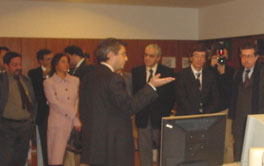 The Manufacturing Systems Engineering Unit should act as partner of the industrial companies in the analysis and optimisation of intra and inter company processes, in the analysis of requirements, definition and selection of management support information systems. The Manufacturing Systems Engineering Unit should act as partner of the industrial companies in the analysis and optimisation of intra and inter company processes, in the analysis of requirements, definition and selection of management support information systems.
UESP should focus its scientific activity in a reduced number of research topics where it can aim at excellence patterns and where it can contribute to the resolution of problems in the national industry.
In scientific terms, the areas to privilege will be Entrepreneurial Cooperation Networks, Entrepreneurial Cooperation Networks, Optimisation of planning and scheduling problems, Optimization of cutting and bundling problems.
New strategic partnerships for the Unit
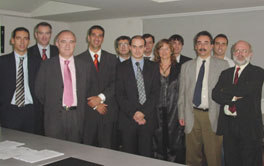 According to the Unit’s coordinator, the positioning of UESP in the market was established over ten years ago and it is still a reality. According to the Unit’s coordinator, the positioning of UESP in the market was established over ten years ago and it is still a reality.
UESP seeks to develop long-term strategic partnerships with software houses and equipment manufacturers aiming at the joint development of new competencies and innovative products. The alignment of activities inherent to these partnerships should make sure the technology based companies have access to unique and updated competencies, and it should comprehend the value of UESP’s research work.
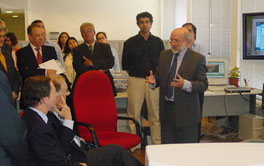 The Unit is planning on extending the number of this kind of partnerships to more national and international companies. The Unit is planning on extending the number of this kind of partnerships to more national and international companies.
In a more scientific perspective, UESP has been promoting partnerships with referenced R&D entities both national and international. The main objectives of this activity are the exchange of experiences, the articulation of programmes and research projects and the possible recruitment of collaborators with a high degree of training and experience. The Unit is also inserted in research networks that perform in areas related to its interests. |


 BIP: How did you prepare for the Visit?
BIP: How did you prepare for the Visit?  Some posters of the Unit and of projects were prepared, as well as a set of presentations that structured the main subjects in discussion.
Some posters of the Unit and of projects were prepared, as well as a set of presentations that structured the main subjects in discussion. 

 The Manufacturing Systems Engineering Unit should act as partner of the industrial companies in the analysis and optimisation of intra and inter company processes, in the analysis of requirements, definition and selection of management support information systems.
The Manufacturing Systems Engineering Unit should act as partner of the industrial companies in the analysis and optimisation of intra and inter company processes, in the analysis of requirements, definition and selection of management support information systems.  According to the Unit’s coordinator, the positioning of UESP in the market was established over ten years ago and it is still a reality.
According to the Unit’s coordinator, the positioning of UESP in the market was established over ten years ago and it is still a reality.  The Unit is planning on extending the number of this kind of partnerships to more national and international companies.
The Unit is planning on extending the number of this kind of partnerships to more national and international companies.